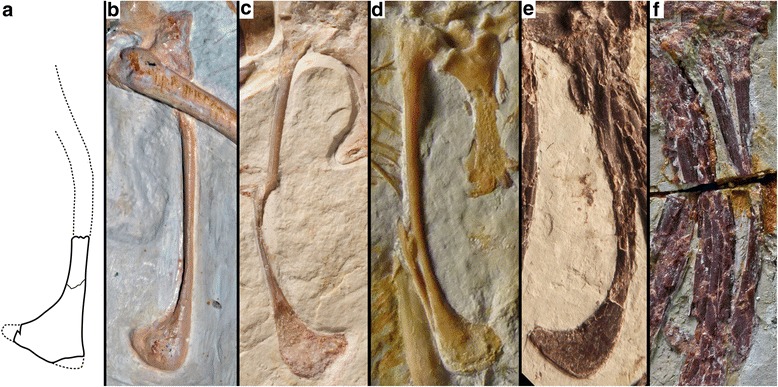Fig. 7.

Comparison of pubic morphology of Ostromia (a) with Archaeopteryx (b-d) and Anchiornis (e, f). a Reconstructed pubis of Ostromia crassipes. b Pubis of the Berlin specimen of Archaeopteryx (photograph of high-quality cast at BSPG). c Pubes of the Munich specimen of Archaeopteryx. Note that the proximal shaft is of the left pubis, while the distal part is the right pubis, the proximal part of which is hidden by matrix. d Pubis of the 11th specimen of Archaeopteryx. Note that part of the shaft of the right pubis is visible distally, creating the impression of a flexed shaft. However, any impression of these structures would clearly show two pubic shafts, unlike the situation in the Haarlem specimen (see Fig. 5a). e Pubis of Anchiornis (BMNHC PH822; photo courtesy Rui Pei). f Pubis of Anchiornis (STM0-165; photo courtesy Wang Xiaoli)
